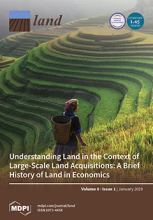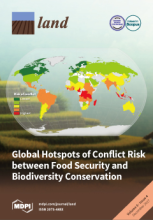Land Library
Welcome to the Land Portal Library. Explore our vast collection of open-access resources (over 74,000) including reports, journal articles, research papers, peer-reviewed publications, legal documents, videos and much more.
/ library resources
Showing items 1 through 9 of 35.The livelihoods of indigenous peoples, custodians of the world’s forests since time immemorial, were eroded as colonial powers claimed de jure control over their ancestral lands.
Humanitarian and development organizations working in conflict-affected settings have a particular responsibility to do no harm and contribute to the wellbeing of the population without bias.
This article provides analysis of the issues relating to movement towards new models for Indigenous-led conservation in light of Canada’s initiatives for greater protected areas representation through Target 1.
Using landscape moderation insurance and Intermediate Disturbance Hypothesis (IDH) as frameworks, this study assessed the response of local assemblage among different land use regimes (mean β-diversity), using the Jaccard dissimilarity matrix in contrasting Human Modified Forest Landscapes (HMFLs
Indigenous territories are facing increasing pressures from numerous legal and illegal activities that are pushing commodity frontiers within their limits, frequently causing severe environmental degradation and threatening indigenous territorial rights and livelihoods.
Lao People’s Democratic Republic (PDR) has been experiencing significant forest depletion since the 1980s, but there is little evidence to demonstrate the major causes and underlying drivers for the forest cover changes.
Community-managed reserves (CMRs) comprise the fastest-growing category of protected areas throughout the tropics. CMRs represent a compromise between advocates of nature conservation and advocates of human development. We ask whether CMRs succeed in achieving the goals of either.
Forest lands in Indonesia are classified as state lands and subject to management under agreements allocated by the Ministry of Environment and Forestry.
Smallholder farmers and indigenous communities must cope with the opportunities and threats presented by rapidly spreading estate crops in the frontier of the agricultural market economy.






